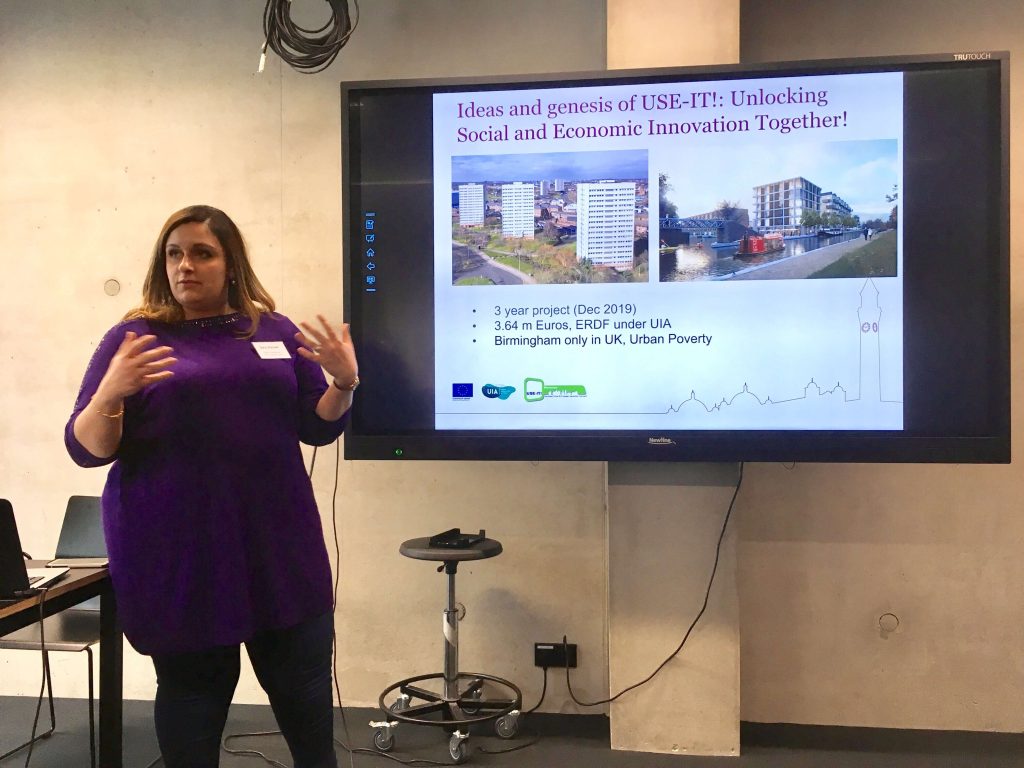
My colleague Dr Sara Hassan and I recently attended the Tallinn workshop on housing to present two of the projects City-REDI is currently working on and hear about other interesting research going on in the field of urban studies and planning policy. It was a great experience that gave us both the opportunity to think more about how to push our research forward and best fulfil City-REDI’s remit to be at the forefront of research on city-regions and urban economic development. We also had the chance to visit the Lasnamäe estate, a large Soviet housing estate on the edge of Tallinn. Fascinatingly, it relates very differently to the wider city of Tallinn than the estates in Birmingham we look at as part of our research. As in other parts of Central and Eastern Europe, there is still some development and investment going into such projects, and the ownership structures are very different than here in the UK, where “Right to Buy” has severely depleted the quantity and quality of social housing available to people with a low-income.

I introduced the project “The Democratic Foundations of the Just City”, which is a collaboration between researchers at the University of Birmingham and the University of Zurich to understand how urban planning policy impacts upon rates of gentrification, ghettoization and access to affordable housing. For the purposes of this project we have chosen three Western European second cities with quite distinct institutional models: namely, Birmingham, Lyon and Zurich, where the levels of devolution to municipal governments and the ability for citizens to impact the planning process are materially quite distinct. We have completed the quantitative research phase of this project (and have a number of fantastic maps showing rich data from the cities!) and are now moving onto the qualitative phase, interviewing planning professionals and local government officials to understand the intent of policies in relation to their actual effect.

Another Birmingham project we introduced was “USE-IT! Unlocking Social and Economic Innovation Together”. This project has over €3.5 million from the European Union’s Urban Innovative Actions programme to understand poverty in Birmingham and work on new ways of connecting those in the most deprived areas with the resources they need to stay resilient and improve their own economic conditions. We also aim to develop ‘realist’ interventions that can help the city to avoid segregation and gated communities as major investment in private “luxury” housing take place in deprived areas. Sara discussed USE-IT!’s innovative community research model, which has been borrowed from public health research and is rather new in the field of urban studies. We recruited 65 people living in the Greater Icknield area and trained them to work as researchers and gather the data for the project, and also to conduct research in their own areas of interest to present to the stakeholders on the project including Birmingham City Council and the National Health Service. We are now moving towards supporting the community researchers in setting themselves up as a CIC, which will be a company which can then be commissioned to carry out research among local communities in the event of investments into the area.
We are also interested in understanding the role of universities as anchor institutions and their presence in local communities to encourage social mobility, and to that end, we will be carrying out further research under the aegis of USE-IT! to understand attitudes toward the HE sector. As the qualitative researcher on the project, I am interested in hearing from the opinions of people who might say that university is not for people like them and finding out what they think could be done to change this situation. USE-IT! has already started to have an effect on this: several of our community researchers have decided to pursue higher education, with two even enrolling on a master’s programme in urban planning here at Birmingham!

Tallinn was an interesting place for Sara and I for another reason. As we both have an interest in connectivity (with Sara having a background in transport planning), seeing a city with heavy snow and temperatures down to -15 where the infrastructure continued to function was a lesson in itself! We hope that the network built during the Tallinn workshop will lead to possible collaboration in the future and look forward to hearing from our colleagues working across Europe to understand urban planning, space and place, and the role that the state should play in housing policy in the 21st century.
This blog was written by Liam O’Farrell, Policy and Data Analyst, City-REDI, University of Birmingham.
Disclaimer:
The views expressed in this blog are those of the authors and not necessarily those of City-REDI or the University of Birmingham.
To sign up for our blog mailing list, please click here.
